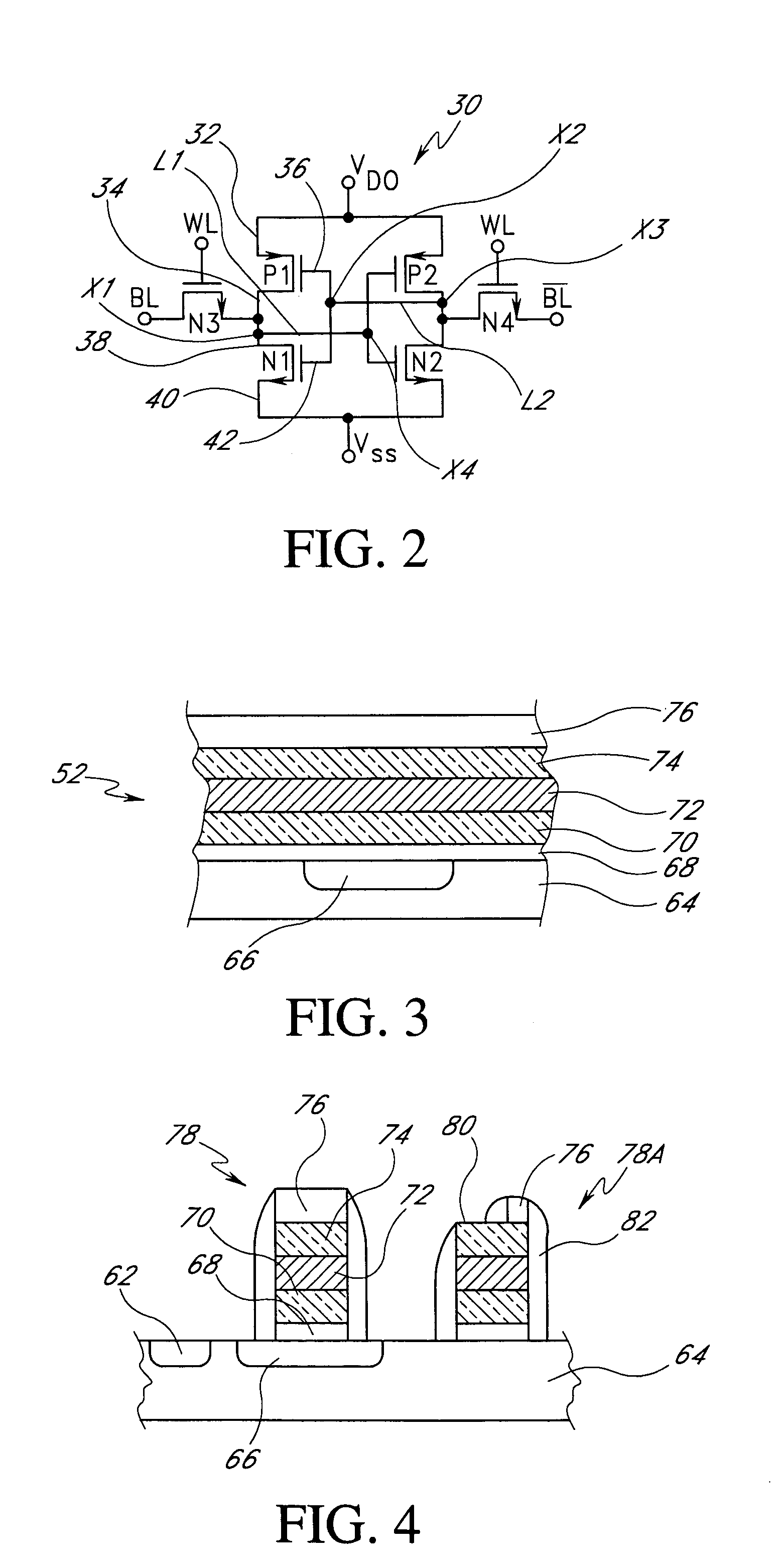Transistor gate and local interconnect
- Summary
- Abstract
- Description
- Claims
- Application Information
AI Technical Summary
Benefits of technology
Problems solved by technology
Method used
Image
Examples
Embodiment Construction
[0020]Reference will now be made to the drawings wherein like numerals refer to like parts throughout. As is understood in the art, interconnects are used to interconnect various circuit components of semiconductor devices. To provide context and background, a circuit diagram of a typical integrated circuit formed on a semiconductor substrate is initially described in connection with FIG. 2. The circuit illustrated in FIG. 2 is simply one example of a typical circuit formed on an integrated circuit that requires the use of low resistance local interconnects. It will be appreciated from the following discussion that local interconnects are used in many different types of integrated circuits including SRAM, DRAM and other non-memory circuits and, as such, the present invention should not be limited to only the circuit of FIG. 2. The process by which the interconnect of the illustrated embodiment will be described in greater detail below in connection with FIGS. 3–7.
[0021]As shown in F...
PUM
 Login to View More
Login to View More Abstract
Description
Claims
Application Information
 Login to View More
Login to View More - R&D
- Intellectual Property
- Life Sciences
- Materials
- Tech Scout
- Unparalleled Data Quality
- Higher Quality Content
- 60% Fewer Hallucinations
Browse by: Latest US Patents, China's latest patents, Technical Efficacy Thesaurus, Application Domain, Technology Topic, Popular Technical Reports.
© 2025 PatSnap. All rights reserved.Legal|Privacy policy|Modern Slavery Act Transparency Statement|Sitemap|About US| Contact US: help@patsnap.com



